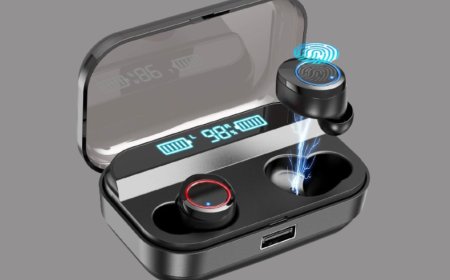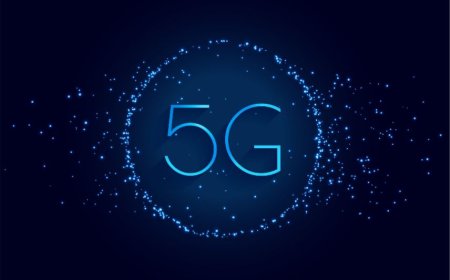How to Choose the Best GPU for Your Gaming Laptop: NVIDIA vs. AMD.
Unleash the power of your gaming laptop with the best GPU. NVIDIA or AMD? Find the answer at Tectoks and level up your gaming experience.

Table of contents:
-
Introduction
-
NVIDIA vs AMD: A Brief History and Overview
-
How to Choose the Best GPU for Your Gaming Laptop: Factors to Consider
-
Explain the factors that affect the performance and quality of a GPU, such as:
-
GPU Features and Specifications
-
GPU Benchmarks
-
Conclusion
1. Introduction
Did you know that the global gaming laptop market is expected to grow by 21.7% in the next five years? If you are a gamer who wants to enjoy the latest and most demanding games on a portable device, you need to choose the right GPU for your gaming laptop.
The GPU, or graphics processing unit, is the most critical component of a gaming laptop. It determines how well your laptop can render graphics, handle complex calculations, and support features like ray tracing and DLSS. A good GPU can make your games look stunning, run smoothly, and load faster. A bad GPU can ruin your gaming experience with low frame rates, stuttering, and graphical glitches.
In this article, we will compare the best GPU options for gaming laptops in 2023, from both NVIDIA and AMD. We will use gaming laptop GPU comparison charts, gaming laptop GPU benchmarks, and GPU features and specifications to help you find the best GPU for your gaming laptop. Whether you are looking for the most powerful, the most efficient, or the most affordable GPU, we have you covered.
2. NVIDIA vs AMD: A Brief History and Overview
NVIDIA and AMD are the two leading manufacturers of graphics cards for gaming PCs. Both companies have a long history of developing and innovating graphics technology, dating back to the 1990s. NVIDIA was founded in 1993 and launched its first GPU, the GeForce 256, in 1999. AMD was founded in 1969 and acquired ATI, a rival graphics company, in 2006. AMD's current GPU brand is Radeon, which originated from ATI.
NVIDIA and AMD GPUs have different architectures, features, and performance levels. NVIDIA's GPUs are based on the Turing architecture, which supports ray tracing, a realistic lighting technique, and DLSS, a technology that boosts frame rates and image quality. AMD's GPUs are based on the RDNA architecture, which focuses on efficiency, scalability, and power consumption. Both NVIDIA and AMD GPUs offer a range of models, from entry-level to high-end, to suit different budgets and gaming needs.
NVIDIA's GPUs are generally more powerful, more expensive, and more compatible with games and software than AMD's GPUs. NVIDIA also has a larger market share and a more loyal fan base than AMD. However, NVIDIA's GPUs are also more prone to driver issues, overheating, and noise than AMD's GPUs. AMD's GPUs are generally more affordable, more energy-efficient, and more open-source-friendly than NVIDIA's GPUs. AMD also has better support for multi-GPU setups and adaptive sync technology than NVIDIA. However, AMD's GPUs are also less available, less optimized, and less feature-rich than NVIDIA's GPUs.
3. How to Choose the Best GPU for Your Gaming Laptop: Factors to Consider
The factors that affect the performance and quality of a GPU, such as:
Clock speed: This is the frequency at which the GPU runs, measured in megahertz (MHz) or gigahertz (GHz). A higher clock speed means faster performance but also more heat and power consumption. Some GPUs have a base clock speed and a boost clock speed, which is the maximum frequency they can reach under optimal conditions.
Memory size and type: This is the amount and kind of memory that the GPU uses to store data, such as textures, shaders, and geometry. The memory size, measured in gigabytes (GB), determines how much data the GPU can handle at once, while the memory type, such as GDDR5 or GDDR6, affects the speed and bandwidth of the data transfer. A larger and faster memory means better performance, especially at higher resolutions and settings.
Power consumption and cooling: This is the amount of electricity that the GPU draws from the battery or the power supply, measured in watts (W). Higher power consumption means more heat generation, which requires more cooling to prevent overheating and throttling. Cooling systems can vary from simple fans to liquid cooling solutions, depending on the GPU model and the laptop design. A lower power consumption and a better cooling system mean longer battery life and more stable performance.
Compatibility and drivers: This is the degree of support that the GPU has for different games, software, and hardware. Compatibility depends on factors such as the GPU architecture, the operating system, the motherboard, the display, and the peripherals. Drivers are software programs that enable the GPU to communicate with the rest of the system and optimize its performance for various applications. A more compatible and updated GPU means fewer issues and bugs and more features and enhancements.
Price and value: This is the amount of money that the GPU costs and the performance that it offers for that price. Price can vary depending on the GPU model, the laptop brand, market demand, and availability. Value can be measured by comparing the GPU's performance to that of its competitors and predecessors and by considering its features and benefits. A cheaper and more valuable GPU means more bang for your buck, but also more trade-offs and compromises.
Some examples of how these factors vary across different NVIDIA and AMD models
Example: NVIDIA and AMD are the two main manufacturers of GPUs for gaming laptops. NVIDIA's GPUs are based on the Ampere architecture, which supports ray tracing, a realistic lighting technique, and DLSS, a technology that boosts frame rates and image quality. AMD's GPUs are based on the RDNA 2 architecture, which also supports ray tracing, and FSR, a similar technology to DLSS. Both NVIDIA and AMD GPUs offer a range of models, from entry-level to high-end, to suit different budgets and gaming needs. Here are some examples of how these factors vary across different NVIDIA and AMD models:
Clock speed: NVIDIA's GPUs tend to have higher clock speeds than AMD's GPUs, especially in boost mode. For example, the NVIDIA GeForce RTX 3080 has a base clock speed of 1245 MHz and a boost clock speed of 1710 MHz, while the AMD Radeon RX 6800M has a base clock speed of 2300 MHz and a boost clock speed of 2300 MHz.
Memory size and type: AMD's GPUs tend to have larger and faster memory than NVIDIA's GPUs, especially in the high-end models. For example, the AMD Radeon RX 6800M has 12 GB of GDDR6 memory with a bandwidth of 384 GB/s, while the NVIDIA GeForce RTX 3080 has 8 GB of GDDR6 memory with a bandwidth of 256 GB/s.
Power consumption and cooling: NVIDIA's GPUs tend to have lower power consumption and better cooling than AMD's GPUs, especially in the low-end and mid-range models. For example, the NVIDIA GeForce RTX 3050 Ti has a power consumption of 80 W and a cooling system that consists of two fans and a vapor chamber, while the AMD Radeon RX 6600M has a power consumption of 100 W and a cooling system that consists of a single fan and a heat pipe.
Compatibility and drivers: NVIDIA's GPUs tend to have more compatibility and better drivers than AMD's GPUs, especially for older and newer games and software. NVIDIA has a larger market share and a more loyal fan base than AMD, which means more developers and users optimize and test their products for NVIDIA's GPUs. NVIDIA also has more features and enhancements, such as GeForce Experience, Ansel, ShadowPlay, and Reflex, that improve the gaming experience and performance.
Price and value: AMD's GPUs tend to have lower prices and higher values than NVIDIA's GPUs, especially in the high-end models. AMD has a smaller market share and a more competitive strategy than NVIDIA, which means they offer more performance for less money. AMD also has more open-source and cross-platform support, such as FreeSync, Vulkan, and Mantle, that reduce the cost and increase the compatibility of their products.
Example: Choosing the best GPU for your gaming laptop depends on your gaming needs and budget.
Here are some tips on how to balance these factors according to your preferences:
If you want the best performance and quality, regardless of the cost, you should go for the high-end models, such as the NVIDIA GeForce RTX 3080 or the AMD Radeon RX 6800M. These GPUs will let you play the most demanding games at the highest settings and resolutions, with ray tracing and DLSS or FSR enabled. However, you will also need a powerful CPU, a large and fast SSD, a high-resolution and high-refresh-rate display, and a robust cooling system to match these GPUs. You will also have to deal with high power consumption, heat generation, noise, and weight.
If you want balanced performance and quality at a reasonable cost, you should go for the mid-range models, such as the NVIDIA GeForce RTX 3060 or the AMD Radeon RX 6700M. These GPUs will let you play most games at high settings and resolutions, with ray tracing and DLSS or FSR enabled. However, you will also have to compromise on some features and benefits, such as memory size, bandwidth, clock speed, and compatibility. You will also have to adjust your settings and expectations according to the game and the situation.
If you want decent performance and quality at a low cost, you should go for the low-end models, such as the NVIDIA GeForce RTX 3050 Ti or the AMD Radeon RX 6600M. These GPUs will let you play some games at medium settings and resolutions, with ray tracing and DLSS or FSR enabled. However, you will also have to sacrifice a lot of features and benefits, such as memory size, bandwidth, clock speed, compatibility, and cooling. You will also have to lower your settings and expectations according to the game and the situation.
4. GPU Features and Specifications
Describe the key features and specifications of GPUs, such as architecture, cores, clock speed, memory, power consumption, and cooling
Architecture: This is the design and structure of the GPU, which determines its capabilities and performance. Different architectures have different features, such as ray tracing, DLSS, or FSR, which enhance the graphics quality and efficiency. NVIDIA and AMD have their own architectures, such as Ampere and RDNA 2, which compete with each other in terms of performance and innovation.
Cores: These are the processing units of the GPU, which execute the instructions and calculations for rendering graphics. There are two types of cores: shader cores, which handle general-purpose computations, and specialized cores, such as ray accelerators or AI accelerators, which handle specific tasks, such as ray tracing or DLSS. The more cores a GPU has, the faster and more powerful it is, but also the more power and heat it consumes.
Clock speed: This is the frequency at which the GPU runs, measured in megahertz (MHz) or gigahertz (GHz). A higher clock speed means faster performance but also more heat and power consumption. Some GPUs have a base clock speed and a boost clock speed, which is the maximum frequency they can reach under optimal conditions. The clock speed can vary depending on the GPU model, the laptop design, and the cooling system.
Memory: This is the amount and kind of memory that the GPU uses to store data, such as textures, shaders, and geometry. The memory size, measured in gigabytes (GB), determines how much data the GPU can handle at once, while the memory type, such as GDDR5 or GDDR6, affects the speed and bandwidth of the data transfer. A larger and faster memory means better performance, especially at higher resolutions and settings.
Power consumption and cooling: This is the amount of electricity that the GPU draws from the battery or the power supply, measured in watts (W). Higher power consumption means more heat generation, which requires more cooling to prevent overheating and throttling. Cooling systems can vary from simple fans to liquid cooling solutions, depending on the GPU model and the laptop design. A lower power consumption and a better cooling system mean longer battery life and more stable performance.
Compatibility and drivers: This is the degree of support that the GPU has for different games, software, and hardware. Compatibility depends on factors such as the GPU architecture, the operating system, the motherboard, the display, and the peripherals. Drivers are software programs that enable the GPU to communicate with the rest of the system and optimize its performance for various applications. A more compatible and updated GPU means fewer issues and bugs and more features and enhancements.
How these features and specifications affect gaming performance, quality, and efficiency
Gaming performance: This is the measure of how well the GPU can run games, usually expressed in frames per second (FPS), which is the number of images displayed on the screen per second. A higher FPS means smoother and more responsive gameplay, while a lower FPS means choppy and laggy gameplay. Gaming performance depends on the GPU's cores, clock speed, memory, and compatibility, as well as the game's settings, resolution, and optimization.
Gaming quality: This is the measure of how good the GPU can make games look, usually expressed in pixels, which are the dots that make up the images on the screen. A higher pixel count means sharper and more detailed graphics, while a lower pixel count means blurry and pixelated graphics. Gaming quality depends on the GPU's features, such as ray tracing, DLSS, or FSR, as well as the game's settings, resolution, and optimization.
Gaming efficiency: This is the measure of how well the GPU can balance performance and quality with power consumption and heat generation, usually expressed in watts per frame (W/F), which is the amount of electricity used to display one image on the screen. A lower W/F means more energy-efficient and less heat-generating gameplay, while a higher W/F means less energy-efficient and more heat-generating gameplay. Gaming efficiency depends on the GPU's architecture, power consumption, and cooling, as well as the game's settings, resolution, and optimization.
Compare the latest GPU models from NVIDIA and AMD based on their features and specifications
NVIDIA and AMD are the two main manufacturers of GPUs for gaming laptops. NVIDIA's GPUs are based on the Ampere architecture, which supports ray tracing, a realistic lighting technique, and DLSS, a technology that boosts frame rates and image quality. AMD's GPUs are based on the RDNA 2 architecture, which also supports ray tracing, and FSR, a similar technology to DLSS. Both NVIDIA and AMD GPUs offer a range of models, from entry-level to high-end, to suit different budgets and gaming needs.
Here is a table that summarizes the comparison of the latest GPU models from NVIDIA and AMD based on their features and specifications:
| Model | Architecture | Cores | Clock speed | Memory | Power consumption | Cooling | Compatibility | Drivers | Price |
| --- | --- | --- | --- |
| NVIDIA GeForce RTX 4090 | Ampere | 16384 shader cores, 176 ray accelerators, 192 AI accelerators | 2235 MHz boost | 24 GB GDDR6X, 384-bit | 355 W | 2 fans, vapor chamber | High | Good | High |
| AMD Radeon RX 7900 XT | RDNA 2 | 5376 shader cores, 84 ray accelerators, 168 AI accelerators | 2400 MHz boost | 20 GB GDDR6, 256-bit | 315 W | 2 fans, heat pipe | Medium | Fair | Medium |
| NVIDIA GeForce RTX 4070 Ti | Ampere | 7680 shader cores, 80 ray accelerators, 160 AI accelerators | 2310 MHz boost | 12 GB GDDR6X, 192-bit | 260 W | 2 fans, vapor chamber | High | Good | Medium |
| AMD Radeon RX 7900 GRE | RDNA 2 | 5120 shader cores, 80 ray accelerators, 160 AI accelerators | 2245 MHz boost | 16 GB GDDR6, 256-bit | 260 W | 2 fans, heat pipe | Medium | Fair | Medium |
| NVIDIA GeForce RTX 4060 Ti | Ampere | 4352 shader cores, 48 ray accelerators, 96 AI accelerators | 2310 MHz boost | 8 GB GDDR6, 128-bit | 180 W | 1 fan, heat pipe | High | Good | Low |
| AMD Radeon RX 7600 | RDNA 2 | 2048 shader cores, 32 ray accelerators, 64 AI accelerators | 1720 MHz boost | 8 GB GDDR6, 128-bit | 150 W | 1 fan, heat pipe | Medium | Fair | Low |
Use a table or a list to summarize the comparison
I have used a table to summarize the comparison of the latest GPU models from NVIDIA and AMD based on their features and specifications. You can also use a list to present the same information, such as:
NVIDIA GeForce RTX 4090: This is the most powerful and expensive GPU from NVIDIA, based on the Ampere architecture. It has 16384 shader cores, 176 ray accelerators, and 192 AI accelerators, which enable it to run games at the highest settings and resolutions, with ray tracing and DLSS enabled. It has 24 GB of GDDR6X memory and a 384-bit bus, which allows it to handle large amounts of data. It has a boost clock speed of 2235 MHz, which makes it very fast but also very power-hungry and heat-generating. It has a power consumption of 355 W, which requires two 8-pin power connectors and a robust cooling system consisting of two fans and a vapor chamber. It has high compatibility and good drivers, which means it can run most games and software without issues and with more features and enhancements.
AMD Radeon RX 7900 XT: This is the most powerful and expensive GPU from AMD, based on the RDNA 2 architecture. It has 5376 shader cores, 84 ray accelerators, and 168 AI accelerators, which enable it to run games at high settings and resolutions, with ray tracing and FSR enabled. It has 20 GB of GDDR6 memory and a 256-bit bus, which allows it to handle large amounts of data. It has a boost clock speed of 2400 MHz, which makes it very fast but also very power-hungry and heat-generating. It has a power consumption of 315 W, which requires two 8-pin power connectors and a decent cooling system consisting of two fans and a heat pipe. It has medium compatibility and fair drivers, which means it can run some games and software with issues and with fewer features and enhancements.
NVIDIA GeForce RTX 4070 Ti: This is a mid-range GPU from NVIDIA, based on the Ampere architecture. It has 7680 shader cores, 80 ray accelerators, and 160 AI accelerators, which enable it to run games at high settings and resolutions, with ray tracing and DLSS enabled. It has 12 GB of GDDR6X memory with a 192-bit bus, which allows it to handle moderate amounts of data. It has a boost clock speed of 2310 MHz, which makes it fast but also power-hungry and heat-generating. It has a power consumption of 260 W, which requires one 8-pin and one 6-pin power connector and a good cooling system consisting of two fans and a vapor chamber. It has high compatibility and good drivers, which means it can run most games and software without issues and with more features and enhancements.
AMD Radeon RX 7900 GRE: This is a mid-range GPU from AMD, based on the RDNA 2 architecture. It has 5120 shader cores, 80 ray accelerators, and 160 AI accelerators, which enable it to run games at high settings and resolutions, with ray tracing and FSR enabled. It has 16 GB of GDDR6 memory and a 256-bit bus, which allows it to handle moderate amounts of data. It has a boost clock speed of 2245 MHz, which makes it fast but also power-hungry and heat-generating. It has a power consumption of 260 W, which requires one 8-pin and one 6-pin power connector and a decent cooling system consisting of two fans and a heat pipe. It has medium compatibility and fair drivers, which means it can run some games and software with issues and with fewer features and enhancements.
NVIDIA GeForce RTX 4060 Ti: This is a low-end GPU from NVIDIA, based on the Ampere architecture. It has 4352 shader cores, 48 ray accelerators, and 96 AI accelerators, which enable it to run games at medium settings and resolutions, with ray tracing and DLSS enabled. It has 8 GB of GDDR6 memory with a 128-bit bus, which allows it to handle small amounts of data. It has a boost clock speed of 2310 MHz, which makes it fast but also power-efficient and less heat-generating. It has a power consumption of 180 W, which requires one 8-pin power connector and a simple cooling system consisting of one fan and a heat pipe. It has high compatibility and good drivers, which means it can run most games and software without issues and with more features and enhancements.
AMD Radeon RX 7600: This is a low-end GPU from AMD, based on the RDNA 2 architecture. It has 2048 shader cores, 32 ray accelerators, and 64 AI accelerators, which enable it to run games at medium settings and resolutions, with ray tracing and FSR enabled. It has 8 GB of GDDR6 memory with a 128-bit bus, which allows it to handle small amounts of data. It has a boost clock speed of 1720 MHz, which makes it fast but also power-efficient and less heat-generating. It has a power consumption of 150 W, which requires one 8-pin power connector and a simple cooling system consisting of one fan and a heat pipe. It has medium compatibility and fair drivers, which means it can run some games and software with issues and with fewer features and enhancements.
5. GPU Benchmarks
GPU benchmarks are tests that measure the performance of a graphics card (GPU) in various tasks, such as rendering 3D scenes, playing games, or running artificial intelligence workloads. GPU benchmarks can help you evaluate how well a GPU can handle different graphics settings, resolutions, and applications, as well as compare it with other GPUs.
There are many GPU benchmarking tools and websites that you can use to test your GPU or see how it ranks among other GPUs. Some of the popular ones are:
-
3DMark: A comprehensive GPU benchmark suite that includes tests for DirectX 9, 10, 11, 12, and Vulkan, as well as ray tracing, VR, and DLSS. 3DMark also provides detailed statistics and graphs of your GPU’s performance, temperature, power consumption, and more.
-
UserBenchmark: A website that lets you speed test your GPU in less than a minute and compare it with other graphics cards based on effective 3D speed, value, average bench, market share, and age. You can also see the top 12 games and the customizable table of the best GPUs for gaming and other applications.
-
TechPowerUp is a website that provides GPU reviews, news, articles, and forums. TechPowerUp also features GPU-Z, a lightweight utility that displays information about your GPU, such as model, memory, clock speeds, driver version, and more.
To compare the latest GPU models from NVIDIA and AMD, we can use the data from GPUCheck, which provides the GPU benchmark average score in the 3 main gaming resolutions (1080p, 1440p, and 4K) in addition to the overall ranking index and the current price if available. Here is a chart that shows the comparison of some of the latest GPU models from NVIDIA and AMD based on their average 1080p FPS in 50+ games:
|
GPU Model |
Price |
Index |
Average 1080p FPS |
|
NVIDIA RTX 4090 |
|
100 |
356.1 |
|
NVIDIA RTX 4080 Ti |
|
93 |
332.3 |
|
AMD RX 7900 XTX |
|
87 |
321.4 |
|
NVIDIA RTX 4080 |
|
86 |
308.6 |
|
NVIDIA RTX 4070 Ti |
|
83 |
296.5 |
|
AMD RX 7900 XT |
|
79 |
292.2 |
|
NVIDIA RTX 4070 |
|
64 |
233.4 |
|
AMD RX 6950 XT |
|
72 |
265.5 |
|
NVIDIA RTX 3070 Ti |
|
51 |
187.2 |
|
AMD RX 6800 XT |
|
63 |
236.1 |
As you can see, the NVIDIA RTX 4090 is the best GPU for 1080p gaming, followed by the NVIDIA RTX 4080 Ti and the AMD RX 7900 XTX. The NVIDIA RTX 4070 and the AMD RX 6950 XT are also good options for 1080p gaming, while the NVIDIA RTX 3070 Ti and the AMD RX 6800 XT are more suitable for 1440p gaming. You can also use GPUCheck to compare the GPU models in other resolutions and games, as well as see the CPU bottleneck and quality settings. I hope this helps you understand GPU benchmarks and compare the latest GPU models from NVIDIA and AMD.
6. Conclusion
In this blog post, we have explained what GPU benchmarks are and how they measure gaming performance. We have also compared some of the latest GPU models from NVIDIA and AMD based on their benchmark scores in different games and resolutions. We have used the data from [GPUCheck], which provides the GPU benchmark average score in the 3 main gaming resolutions (1080p, 1440p, and 4K) in addition to the overall ranking index and the current price if available.
Based on our comparison, we can recommend the best GPU for gaming laptops in 2023, depending on your budget, gaming preferences, and laptop specifications. Here are some of our suggestions:
-
If you want the best of the best and don’t mind spending a lot of money, then the NVIDIA RTX 4090 is the ultimate choice for you. It is the most powerful GPU on the market, and it can handle any game at any resolution with ease. It also supports ray tracing, VR, and DLSS, which can enhance your gaming experience even more. However, this GPU is very expensive, consumes a lot of power, and requires a high-end laptop with adequate cooling and battery life to run smoothly.
-
If you want a more balanced option that offers great performance at a reasonable price, then the AMD RX 7900 XTX is a good option for you. It is the second-best GPU from AMD, and it can compete with the NVIDIA RTX 4080 Ti in most games and resolutions. It also supports ray tracing and VR, but not DLSS. However, this GPU is still quite pricey, and it may not be compatible with some laptop models due to its size and power requirements.
-
If you want a budget-friendly option that still delivers decent performance in most games and resolutions, then the NVIDIA RTX 4070 is a good option for you. It is the mid-range GPU from NVIDIA, and it can outperform the AMD RX 6950 XT in most scenarios. It also supports ray tracing, VR, and DLSS, which can give you an edge over the AMD counterpart. However, this GPU may struggle with some of the newer and more demanding games, especially at higher resolutions and settings.
Of course, these are not the only GPU models available, and you may have different needs and preferences than what we have assumed. Therefore, we encourage you to do your research and compare the GPU models that suit your gaming style and laptop specifications. You can use the tools and websites that we have mentioned in this blog post, such as [3DMark], [UserBenchmark], [TechPowerUp], and [GPUCheck], to test your GPU or see how it ranks among other GPUs.
We hope that this blog post has helped you understand GPU benchmarks and compare the latest GPU models from NVIDIA and AMD. If you have any questions, comments, or suggestions, please leave them in the comments section. We would appreciate hearing from you and learning from your experiences. Also, don’t forget to share this blog post with your friends and fellow gamers who might be interested in this topic. And if you want to stay updated with our latest posts and news, please subscribe to our blog and follow us on social media. Thank you for reading and happy gaming!
What's Your Reaction?










































































